Vote Now! The Best Space Photos of 2011
Ginormous Black Hole Caught Eating Another
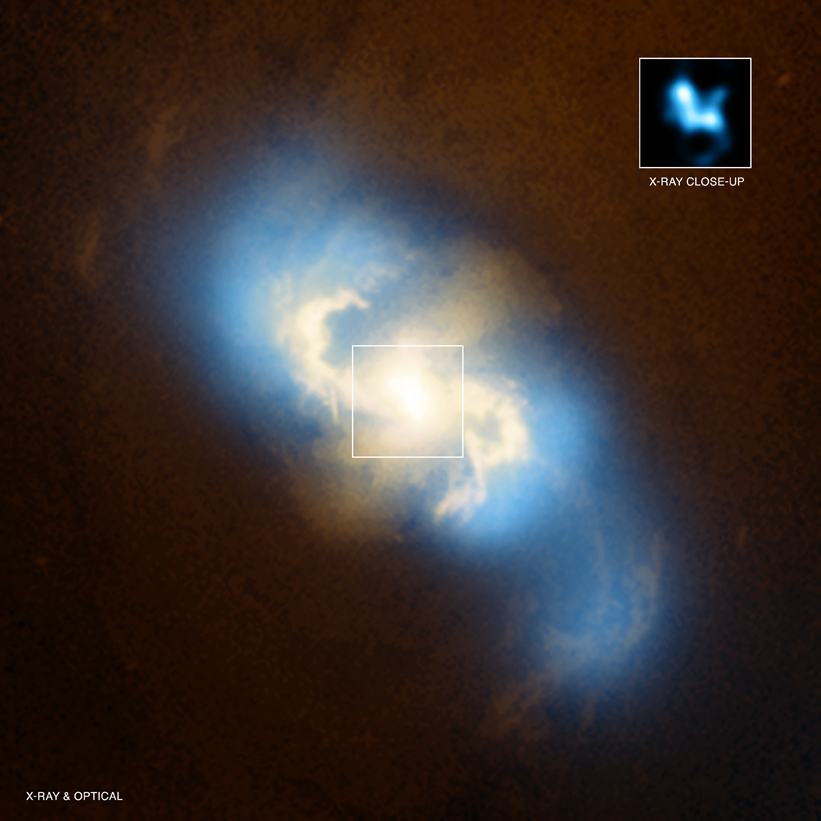
A monstrous black hole at the heart of one galaxy is being devoured by a still larger black hole in another, scientists say. The discovery is the first of its kind and was announced on Wednesday, Aug. 31. [Full Story]
NEXT:Skywatchers' View of Heart Nebula
Skywatchers' Striking View Deep in the Heart Nebula
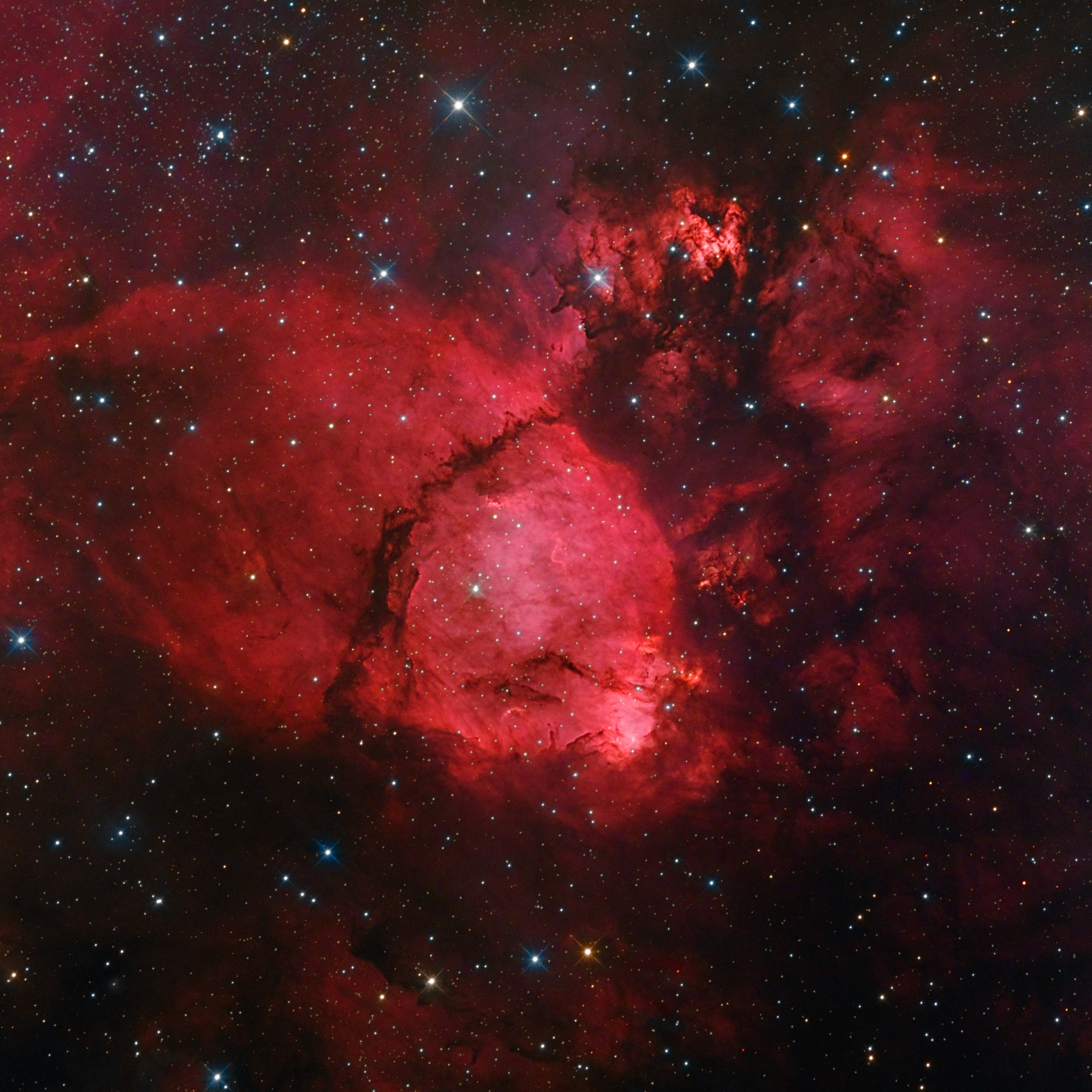
Skywatching enthusiasts Bob and Janice Fera took a spectacular image of the brilliant NGC 896 Emission Nebula, the brightest part of the Heart Nebula, between Sept. 26 and 27 at the Eagle Ridge Observatory, Foresthill, Calif. [Full Story]
NEXT:Amazing NPP Satellite Night Launch Photo
First-of-Its-Kind NASA Satellite Launches to Track Earth Weather, Climate
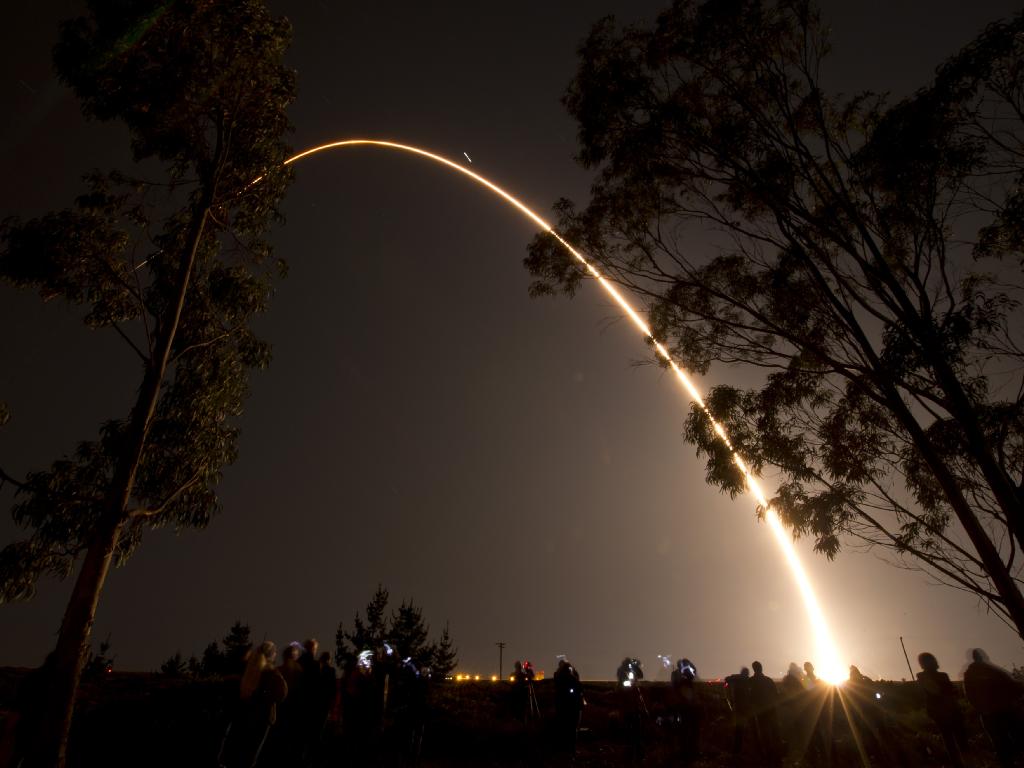
NASA launched an unprecedented Earth-observing satellite from California today (Oct. 28) in a dazzling predawn blastoff that created an artificial sunrise as its rocket soared toward space. [See more NPP satellite launch photos]
NEXT: Saturn Moons Mind the Gap
Mind the Gap

Saturn's moon Titan hangs dimly in the background of this photograph, which also shows the bright moon Dione in the foreground. Pandora, another moon, floats at the right, just outside the narrow sliver of Saturn's rings visible in this image. A fourth moon, Pan, almost imperceptibly makes it into this image in the dark Encke Gap of Saturn's A ring at left. This image was posted on Nov. 9, 2011. [See more stunning photos from space]
NEXT: Giant Sunspot Unleashes Massive Solar Flare
Giant Sunspot Unleashes Massive Solar Flare
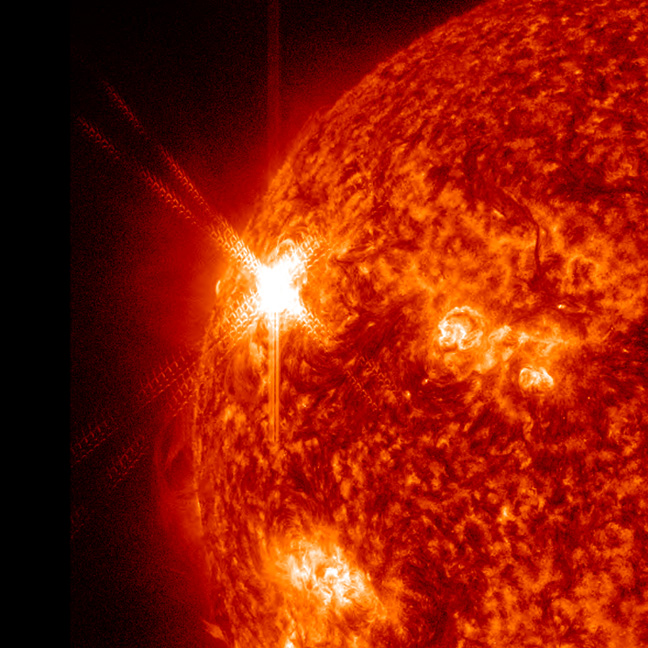
A powerful solar flare that erupted Thursday (Nov. 3) from a huge blemish on the sun's surface has been classified as an X1.9 flare, ranking it in among the most powerful types of storms from our star can unleash.The flare originated in a humongous sunspot that was sighted earlier this week, which ranks as one of the largest sunspots seen in years. The event began at 4:27 p.m. ET (2027 GMT). [Full Story]
NEXT: NASA's Best Moon Map
NASA Probe Beams Home Best Moon Map Ever
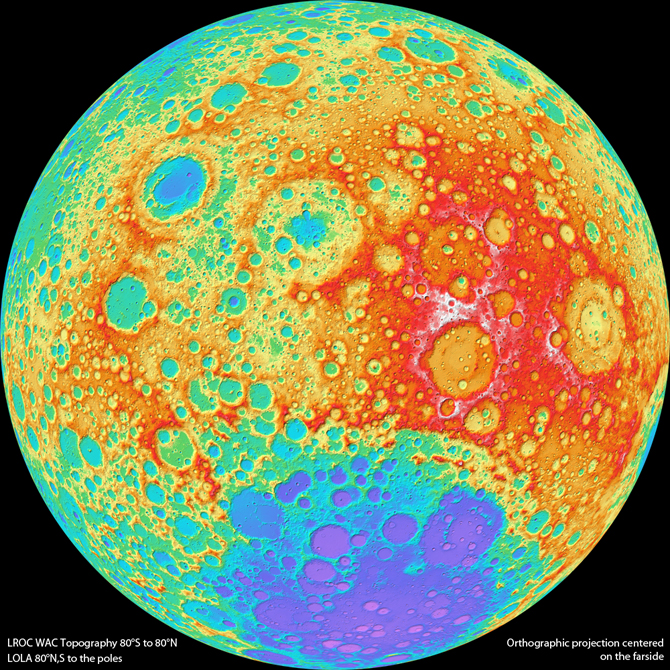
Scientists have stitched together the highest-resolution topographic map of the moon ever created, using observations made by NASA's Lunar Reconnaissance Orbiter (LRO) spacecraft.
The new lunar map covers 98.2 percent of the moon and depicts the natural satellite's surface and features at a pixel scale of about 330 feet (100 meters). A global view of Earth's nearest neighbor at such high resolution had never existed before, scientists said.
"Our new topographic view of the moon provides the dataset that lunar scientists have waited for since the Apollo era," said Mark Robinson of Arizona State University, principal investigator of the Lunar Reconnaissance Orbiter Camera (LROC), in a statement Thursday (Nov. 17). [Read More]
NEXT: Smoky Solar Eclipse
Smoky Sun: Skywatcher Captures Partial Solar Eclipse Through Chimney Smoke
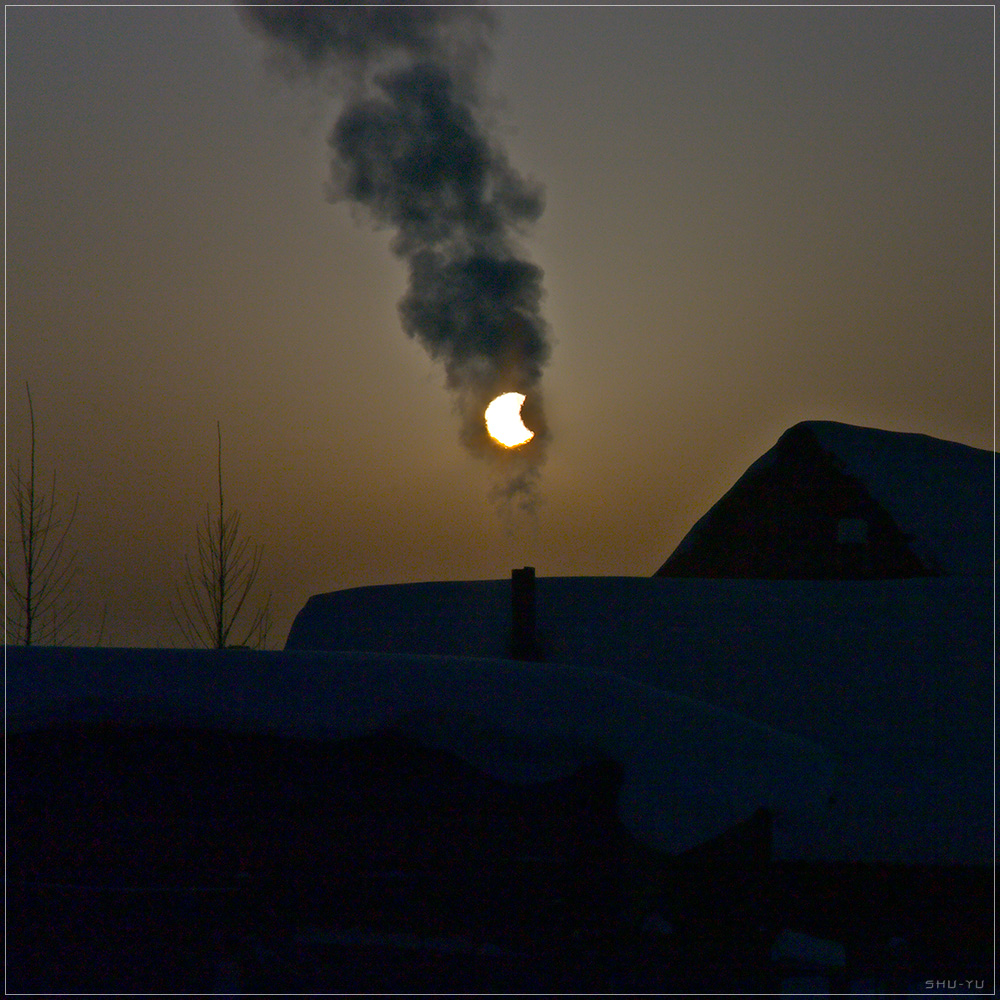
This photo of a solar eclipse looks all the more magical when seen through chimney smoke from a home in a Siberian village near Novosibirsk, Russia. [Read More]
NEXT: Asteroid Vesta's 'Rainbow' Ingredients
Asteroid Vesta's 'Rainbow' Ingredients Shine in New Image
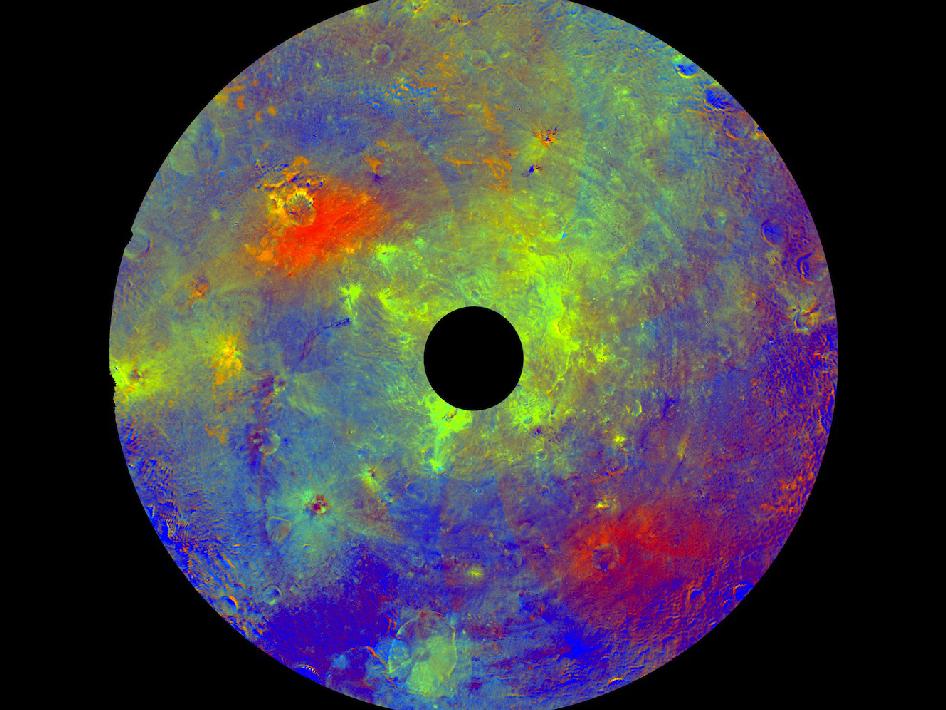
NASA's Dawn spacecraft is revealing the asteroid Vesta in a whole new light. [Read More]
NEXT: Hubble's Clear Star Cluster View
Clearer View
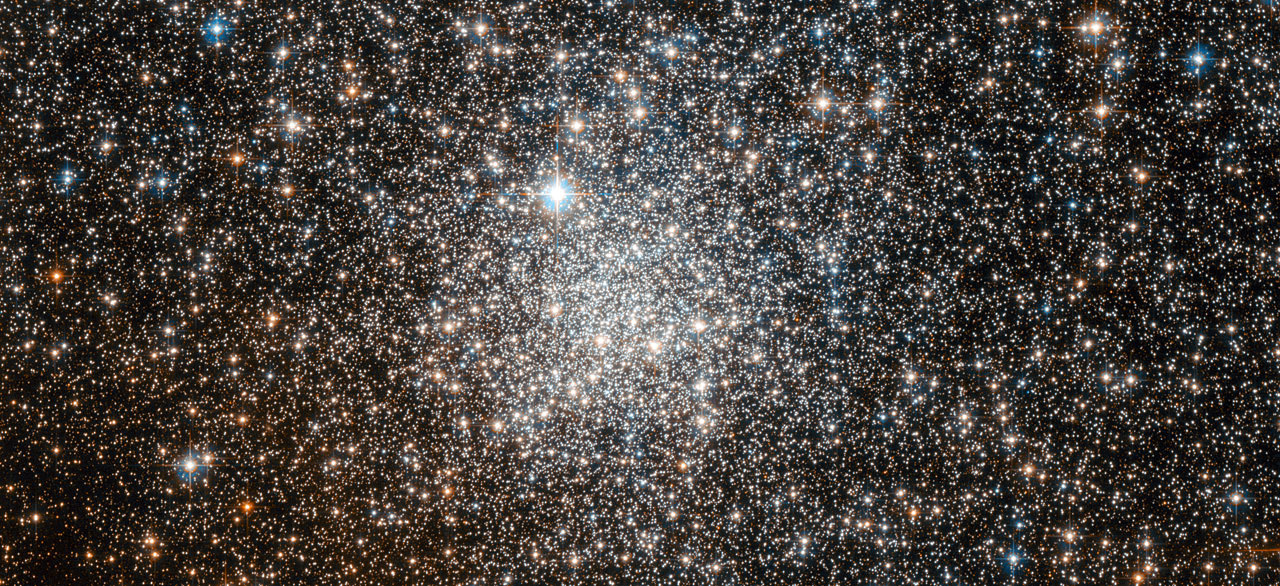
The NASA/ESA Hubble Space Telescope has used its powerful optics to separate the globular cluster NGC 6401 into its constituent stars. NGC 6401 lies within the constellation of Ophiuchus (The Serpent Bearer). The globular cluster's faintness requires a telescope and some observational experience to see it. Globular clusters contain very rich, and generally spherical, collections of stars, hence the name. They orbit the cores of galaxies, with the force of gravity also keeping the stars bound as a group. There are around 160 globular clusters associated with our Milky Way, of which NGC 6401 is one. These objects are very old, containing some of the most ancient stars known. However, there are many mysteries surrounding them, with the origin of globular clusters and their role within galaxy evolution still not completely understood. [View all images]
NEXT: Eerie Green Space Cloud
Hanny's Eerie Green Space Cloud
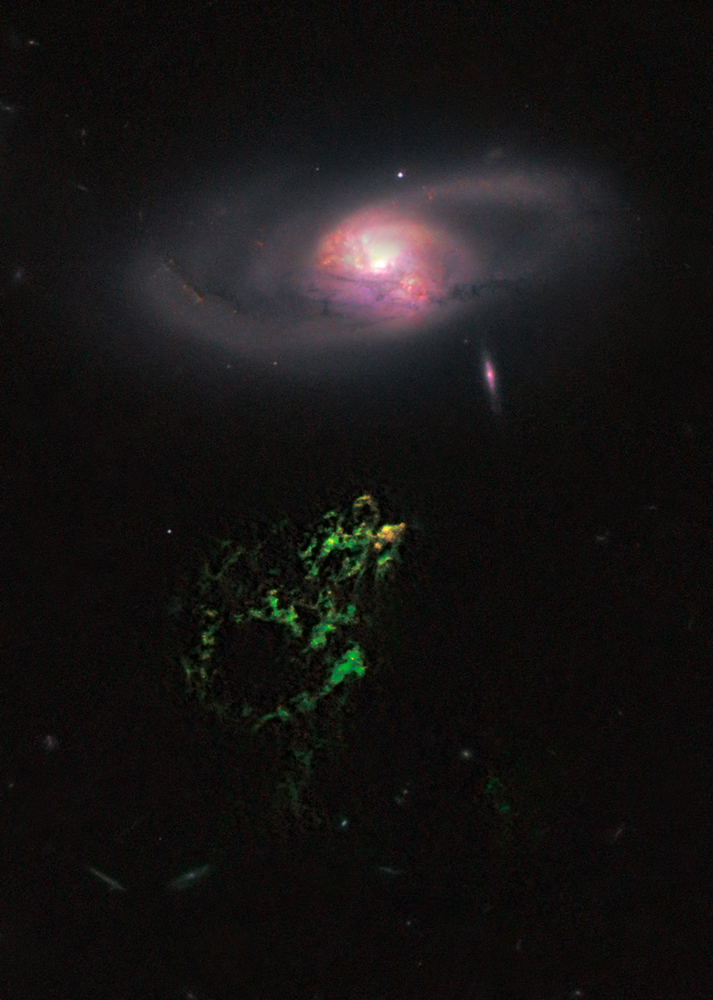
In this image by NASA's Hubble Space Telescope, an unusual, ghostly green blob of gas appears to float near a normal-looking spiral galaxy. The bizarre object, dubbed Hanny's Voorwerp (Hanny's Object in Dutch), is the only visible part of a 300,000-light-year-long streamer of gas stretching around the galaxy, called IC 2497. Astronomers unveiled their best view yet of the object in January 2011. [Full Story]
NEXT: Comet Lovejoy Over Chile
Join our Space Forums to keep talking space on the latest missions, night sky and more! And if you have a news tip, correction or comment, let us know at: community@space.com.
Get the Space.com Newsletter
Breaking space news, the latest updates on rocket launches, skywatching events and more!

Space.com is the premier source of space exploration, innovation and astronomy news, chronicling (and celebrating) humanity's ongoing expansion across the final frontier. Originally founded in 1999, Space.com is, and always has been, the passion of writers and editors who are space fans and also trained journalists. Our current news team consists of Editor-in-Chief Tariq Malik; Editor Hanneke Weitering, Senior Space Writer Mike Wall; Senior Writer Meghan Bartels; Senior Writer Chelsea Gohd, Senior Writer Tereza Pultarova and Staff Writer Alexander Cox, focusing on e-commerce. Senior Producer Steve Spaleta oversees our space videos, with Diana Whitcroft as our Social Media Editor.
